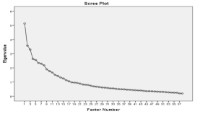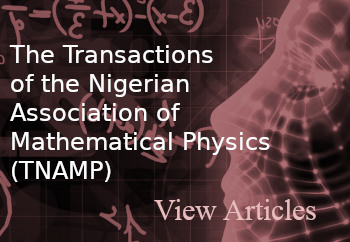COMPARATIVE ANALYSIS OF CONPRO AND SERVQUAL MODELS
Abstract
This study is a comparative analysis of a consumer-producer co-assessment service quality model, CONPRO and SERVQUAL model. The study demonstrated the efficacy of CONPRO and SERVQUAL model using some Commercial banks in Nigeria as case study. A field survey was conducted and a total of 1050 questionnaires were administered out of which 834 were selected to even out for the
two questionnaires, that is, 278 for SERVQUAL, 278 for the Customers and 278 for the producers. The implementation of the CONPRO E- Service quality model was carried out and analyzed using Confirmatory Factor Analysis. The results of the analysis using model fit metrics provide a good case for recommending the CONPRO model for measuring e-service quality compared to the SERVQUAL model. The coefficients for the highest loading for the instruments from Exploratory Factor Analysis (EFA) were set to 1.0 and the reliability of the CONPRO instrument was high at 0.882, while that of the SERVQUAL instrument was 0.638. The mean Gap Score for the SERVQUAL instrument gave a value of 2.66, whereas the mean Gap Score for the CONPRO instrument gave a value of 2.64 using a weighed ratio of 50:50 for consumer and producer. The reliability of the SERVQUAL instrument was 0.638 while that of the CONPRO instrument 0.882. The fit indices for the CONPRO model were: CFI (0.902), IFI (0.897), NFI (0.921), RMSEA (0.012), PGFI (0.823),
PNFI (0.811), AIC (0.201) and ECVI (53.192); which summarily indicated an adequate model for e-service quality measurement. These findings confirm the theoretical position that service quality is a combined construct of both the producer and consumer, which is expected given the generalized nature of service production as captured by the CONPRO instrument.
Downloads
References
Sheehan, J. (2015) Understanding Service Sector Innovation Journal of ACM on Services Science, 49(7): 43-48
Dieter,F., Federioco,M.F., Simper, E. and Toma, L. (2011).’ A semantic Web Services. 3(1): 25-36
Stamatis, D. H., (2003) Failure mode and effect analysis: FMEA from theory to execution, ASQ Quality Press.
Dabholkar, P.A., Shepherd, C.D. and Thorpe, D.I. (2000), A comprehensive framework forservice quality: an investigation of critical conceptual and measurement issues through a longitudinal study, Journal of Retailing, 76(2): 131-9.
Parasuraman, A., Zeithaml, V. and Malhotra, A. (2005). E-S-Qual: A Multiple-Item Scale for Assessing Electronic Service Quality. Journal of Service Research, 7 (3): 213-233.
Hongxiu, L. and Suomi, R. (2009), A Proposed Scale for Measuring E-Service Quality, International Journal of E- service, Science and Technology, 2(1): 23 - 34
Grönroos, C. (2000). Service Management and Marketing – A Customer Relationship Management Approach. Wiley, Chichester.
Garson, D. G. (2008).Factor Analysis: Statnotes. Retrieved March 22, 2008, from North Carolina State University Public Administration Program.
Hair, J.F., Anderson, R.E., Tatham, R.D. and Black, W.C. (2010): Multivariate Data Analysis with Readings 3 rd edn, Macmillan, New York.
Parasuraman, A., Zeithaml, V.A. and Berry, L.L. (1988), SERVQUAL: a multiple item scale for measuring consumer perception of service quality, Journal of Retailing, 64(1): 12-37.
Al-Mamun, S.A., Rahman, A.R.M.M., Rahman, A.R.M.R. and Hossain, M.A. (2012). Students’ Attitudes towards SNE: The Case of Life Science School of Khulna University. International Review of Social Sciences and Humanities, 3(1): 200-209.
Klein J.D and Rita R.C. (2005). Developmental research methods: creating knowledge from instructional design and development practice. Journal of Computing in Higher Education 16(2):23-38
Zikmund, W. G. (2000). Business Research Methods, 6th Ed. Orlando: Dryden Press. Pp46
Norland-Tilburg, E. V. (1990). Controlling error in evaluation instruments. Journal of Extension, 28(2): 19 - 22
Hooper, D., Coughian, J. and Muller, M. (2008): Structural equation modelling guidelines for Determining Model fit. Electronic Journal of Business Research Method, 6, 53 – 60.

Downloads
Published
Issue
Section
License
Copyright (c) 2024 The Journals of the Nigerian Association of Mathematical Physics

This work is licensed under a Creative Commons Attribution-NonCommercial-ShareAlike 4.0 International License.




